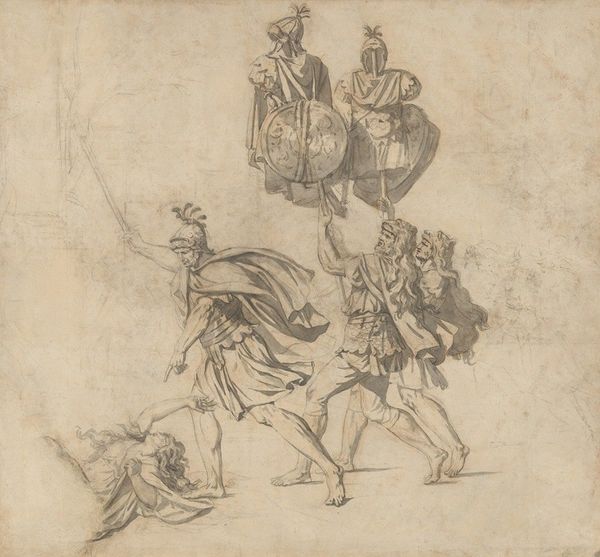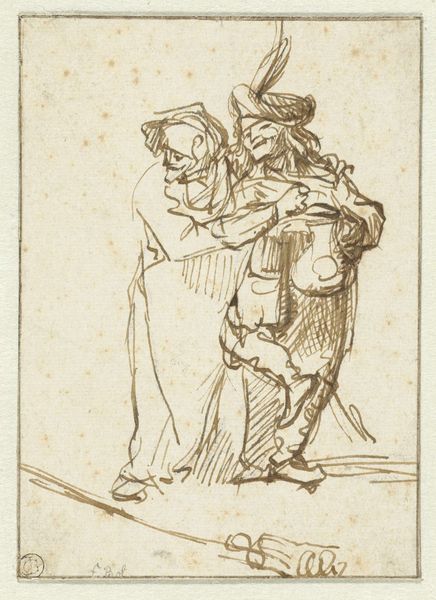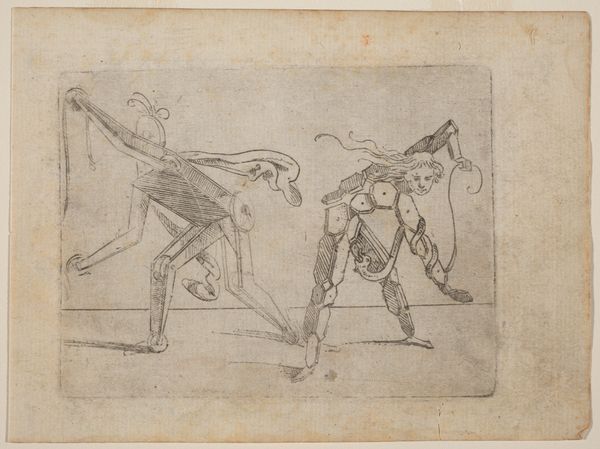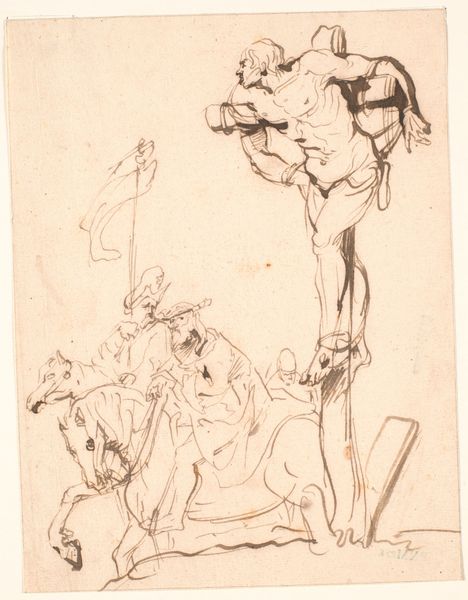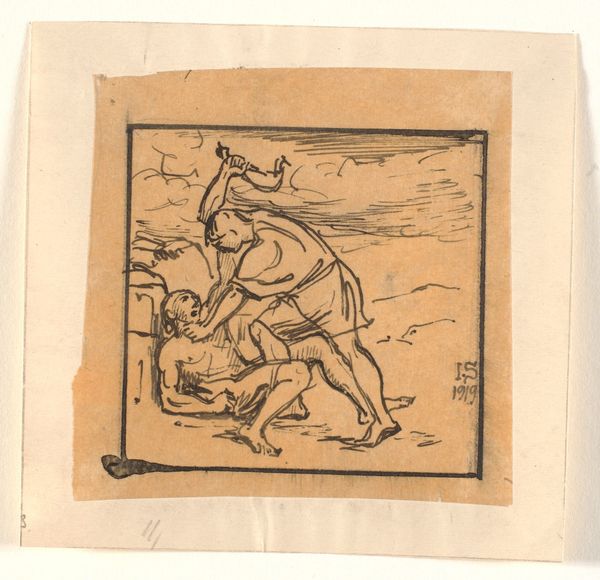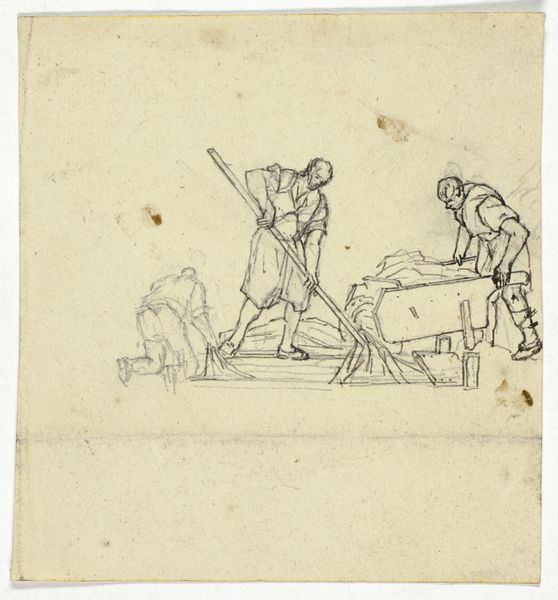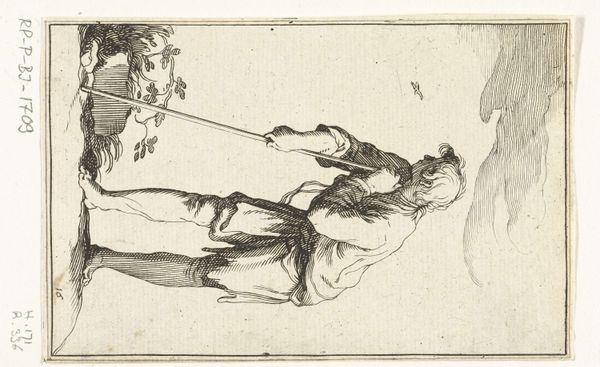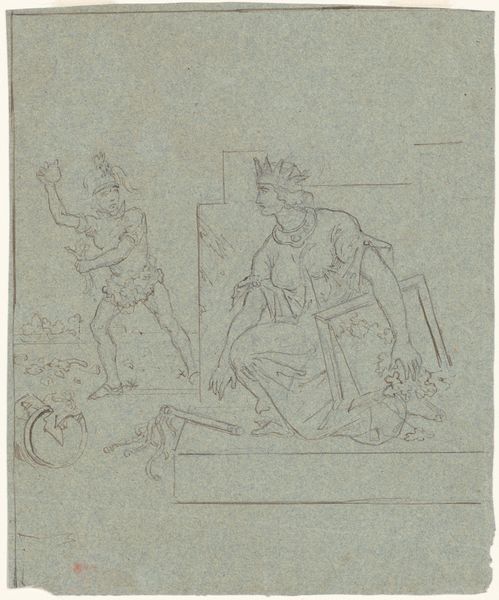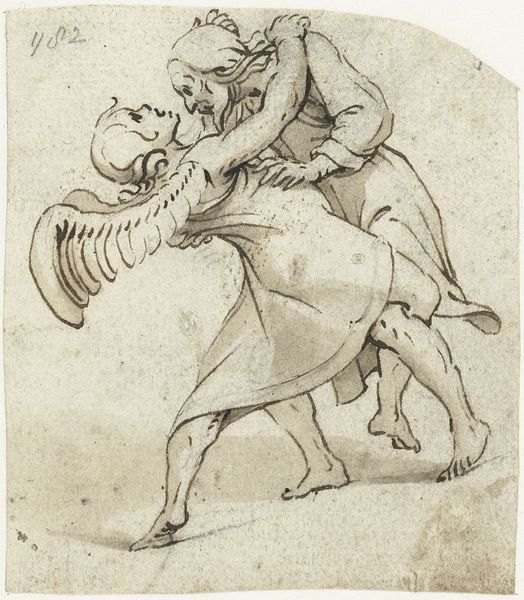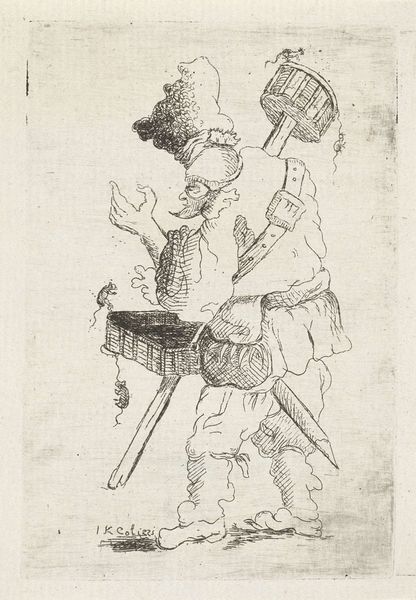
drawing, paper, ink
#
portrait
#
drawing
#
baroque
#
landscape
#
figuration
#
paper
#
ink
#
genre-painting
Dimensions: height 142 mm, width 149 mm
Copyright: Rijks Museum: Open Domain
Rembrandt van Rijn made this drawing of a man helping a rider onto a horse with pen and brown ink. Made in the Dutch Golden Age, the drawing’s subject matter is indicative of a society where equestrian skill was a marker of status and power. Horses were not merely modes of transport, but symbols deeply entwined with military prowess, trade, and aristocratic identity. The rider, likely a person of some standing, requires assistance, highlighting a social hierarchy where service and support were part of daily life. The institutions of the time, such as the military and the merchant class, relied heavily on horses, making horsemanship an essential skill. The level of detail Rembrandt gives to the rider's dress and posture, versus the more gestural rendering of the helper, might reflect these social dynamics. To understand the drawing more fully, research into the dress codes and social customs of 17th-century Netherlands would be valuable. The drawing speaks volumes about the values and structures of its time.
Comments
rijksmuseum about 2 years ago
⋮
Here, Rembrandt was chiefly interested in the rider’s pose. The horse and the man helping the rider are rendered only fragmentarily. Rembrandt corrected himself time and again, scratching over earlier lines with powerful strokes. This probing way of working suggests that he did not have a preconceived image in mind and was giving free rein to his imagination while drawing.
Join the conversation
Join millions of artists and users on Artera today and experience the ultimate creative platform.
